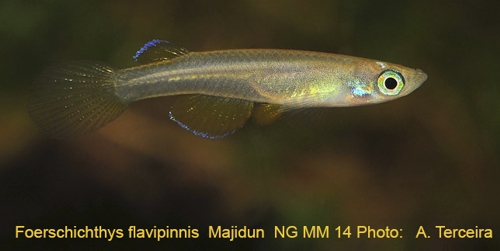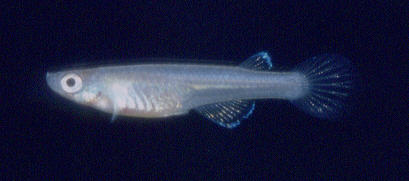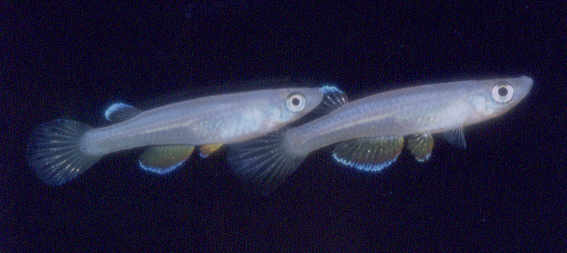Foershichthys flavipinnis (Meinken 1932)

| Meaning of Name |
After flavipinnis meaning yellow fins. | ||||
| First Description |
Meinken H. 1932. (Aplocheilichthys flavipinnis). Über zwei neue Zahnkarpfen aus dem tropischen Westafrika. Blätter fur Aquarien und Terrarienkunde 43 (4): p 54-56, figure 2. | ||||
| Size |
3·5 cm (Scheel). | ||||
| Meristics |
| ||||
| Karyotype |
n = 20, A = 26 (Scheel & Romand 1981) | ||||
| Sub-Genus |
| ||||
| Group |
| ||||
| Synonyms |
| ||||
Populations
|
F.flavipinnis. Males. Photo courtesy of Ed Pürzl. Majidun - NG MM 14 - A shipment of wild caught Killies from the Niger Delta area into the USA in 2014. This was coded NG MM 14 which stands for Nigeria -Macowiak & Mazzola 2014. Collected in the Majidun River and its creeks, in Majidun town, in the Ikorodu area of Lagos State.
| ||||
| Type Locality |
Coastal Lagos, Nigeria. | ||||
| Distribution |
Coastal habitats from southeast Ghana through Togo, Benin to the Niger Delta. | ||||
| Habitat |
Found in small rivers, streams & swampy areas of primary & secondary rainforest on the coastal plain. They are reportedly caught in open clear water near the surface.. | ||||
| Distinguishing Characteristics | A distinctive species easily recognisable. They are a small species with large eyes. | ||||
| Colour/Pattern Variability | In 1993 I kept 2 colour forms from the same bag from a commercial shipment. One was a dull green, the other a dull red/brown. | ||||
| History |
Griem of Hamburg, in 1929 collected them in West Africa near to Lagos. They were referred to as 'Panchax species nov. 'der Zwerpanchax', the 'Dwarf-Panchax' by Meinken in 1929. Prior to this import he stated that they had been imported by Platy-Tischrunde without location information. Meinken, in 1932 had a change of opinion regarding their generic status & put them in Aplocheilichthys without any documented reason. Scheel, in 1965 examined 38 specimens originating from Ibefun, south of Ijebu Ode, Ugheli, east of Warri, Aduna, approx 40 miles south of Isela-Ubu, Auna, between Ijebu Ode & Shagamu or Aiyetoro or Badagri, southwest Nigeria. In 1981 Scheel & Romand created the genus Foershichthys for this sp. | ||||
| Breeding Notes |
I
spawned these easily in rainwater with a little salt added. Eggs were laid in
floating mops. Water temperature around 75°F. I had about 20 fish of mixed
sex in the breeding tank & found ample eggs. I don't think they are predatory
to eggs & fry. Water incubation takes about 14 days. Newly hatched fry are
small & were fed on infusoria in an established tank which no doubt contained
ample zooplankton for them to feed on. | ||||
| Diameter of Egg | Small | ||||
| Remarks |
In there natural habitat they appear in schools in open
water. In commercial shipments they usually come in very small & emaciated.
I had two colour forms from the same import mixed in the same bag. A green shaded
form & a brown shaded form. |
m_Burge.jpg)
f_Burge.jpg)

